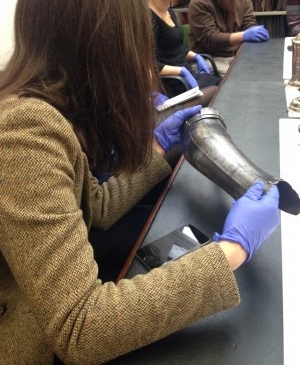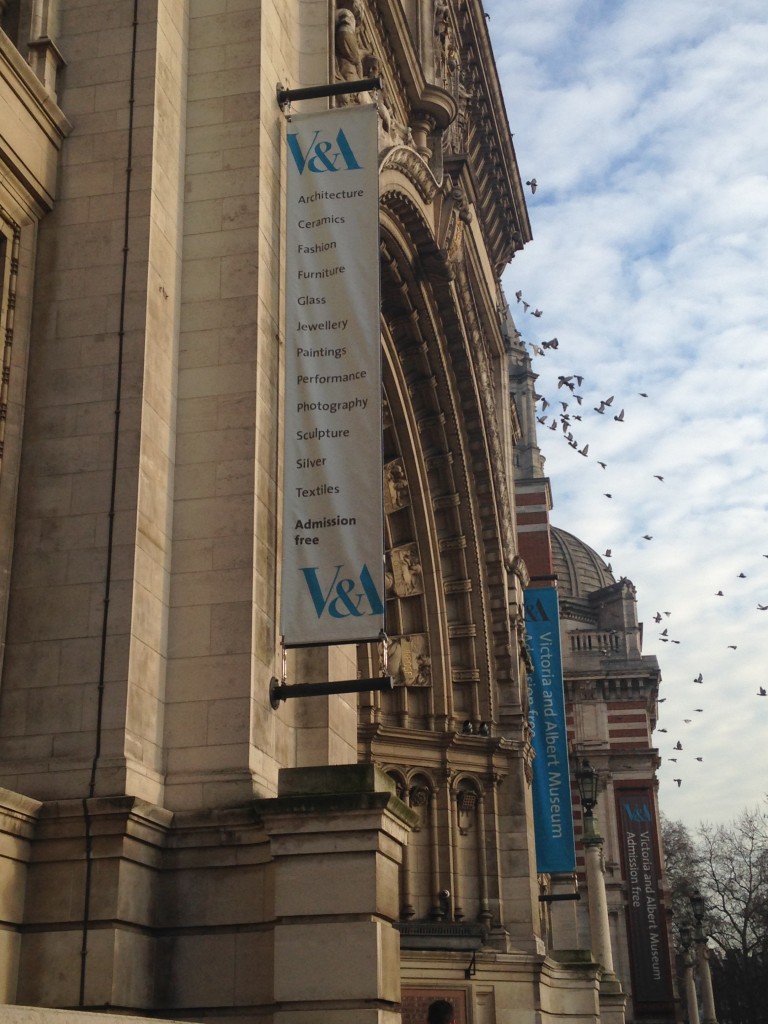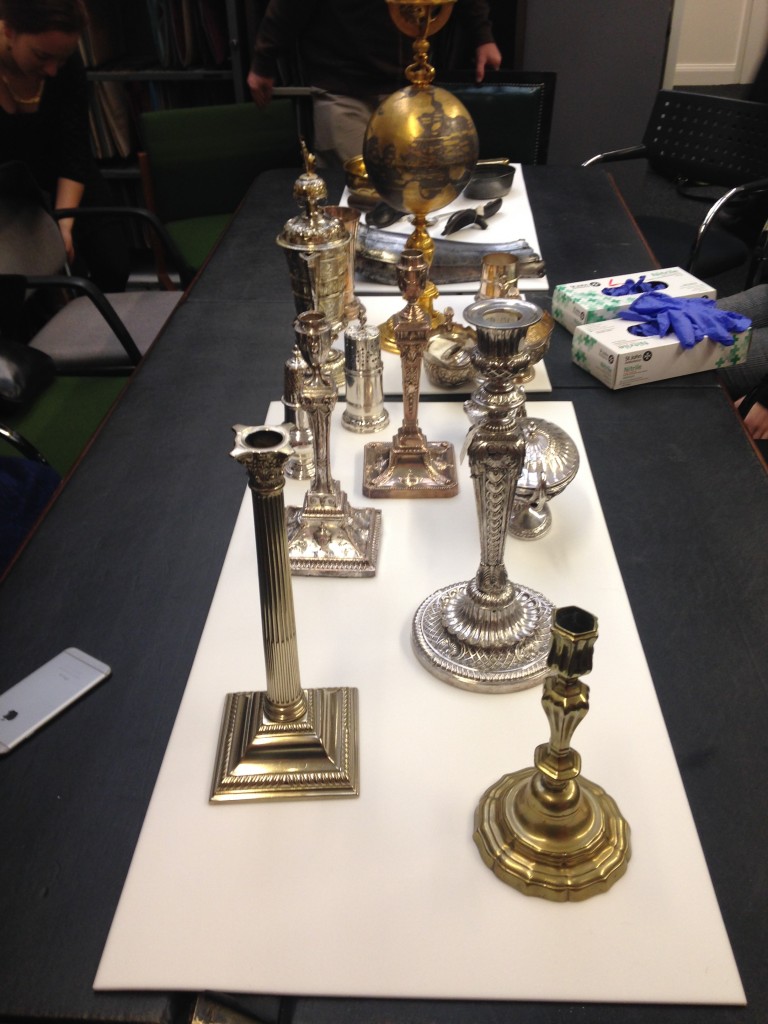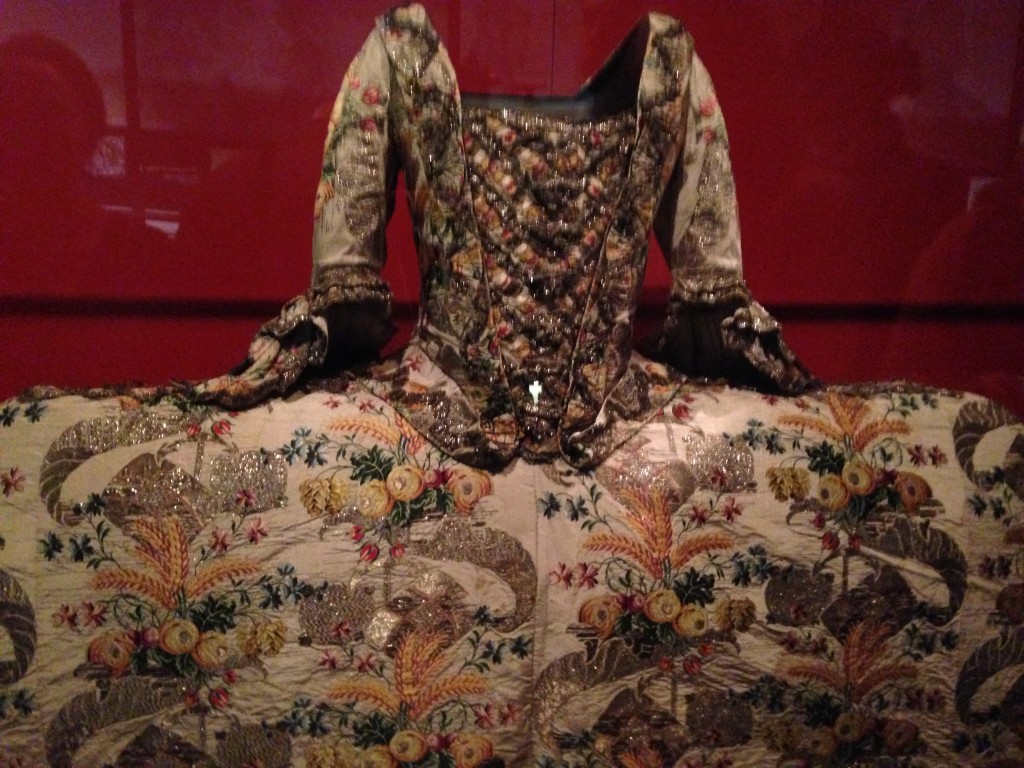London Day 3: London and its Objects
On Tuesday, January 19th we all gratefully got to sleep in a bit and headed off promptly at 9:50am for the Victoria and Albert Museum.
The Victoria and Albert Museum
One of the great privileges of this trip is how much we get to interact first-hand not only with objects, but also with museum professionals. On this particular visit to the V&A we met with Angus Patterson, Senior Curator in the department of Sculpture, Metalwork, Ceramics and Glass. Angus is in charge of the museum’s collection of European Base Metals and Arms and Armour. This includes objects of pewter, silver, cut steel, Sheffield plate, and electroplate.
Upon our arrival to the department Angus had a table waiting with a wide array of metalwork laid out for us to examine.
He then guided us through the various objects, which included a brass basin made in Nuremberg in approximately 1570.
Lan examining the Nuremberg Basin
Many of the objects presented a challenge for our connoisseurship skills, as they were made from processes intended to fool the eye, including a Sheffield plate sugar caster. Sheffield plate, a process in which a thin layer of silver is fused to a block of copper and then shaped as one metal, can often be deceiving as marker’s marks were also used to verify the quality of the product (as is also the case of sterling silver). However, as Angus showed us, Sheffield plate can often be identified by visible traces of the copper as the silver plating is worn away.
Perhaps most thrilling for the students, however, was the discussion surrounding a piece of armor. The piece, which would have covered a person’s leg, had a design of a bow etched into the side, mimicking a man’s stocking garters. Angus made many compelling comparisons between the processes of armour design and the development of printmaking techniques.

A closer look at a piece of armour
After a quick tour through the silver galleries and lunch in the beautiful William Morris- designed café at the V & A, we headed to the Museum of London.
The dining area at the Victoria and Albert Museum, designed by William Morris
At the Museum of London we met with curators Beatrice Behlen and Hazel Forsyth. Beatrice, a Senior Curator of Fashion and Decorative Arts, gave us an in-depth explanation of an embroidered silk mantua from 1751 – 1752, as well as of the “Pleasure Garden” display of historic clothing. Perhaps what was most interesting about Beatrice’s tour was her discussion of curatorial practice, and of the different voices and opinions go into shaping an exhibit. The galleries that we toured had just been reopened in 2010, so many ideas of how to improve or reshape the display were fresh in the curator’s mind.
An eighteenth century silk mantua on display at the Museum of London. Below: the newly-installed Pleasure gardens exhibit.
Excitingly, Hazel Forsyth, the Senior Curator of Medieval and Post-Medieval collections, then invited us to go down into museum storage! There we looked at archaeological archives from the history of London. As Hazel explained, many archaeological objects that turn up in London – either from purposeful digs to chance findings – then come to the Museum of London. On this particular trip she showed us the storage for chance findings, many of which were dug up on the Thames foreshore. This included odd miniature pewter furniture from the late 16th century, which Hazel suspects were created as part of a livery company celebration.
A pewter model of a buffet, recovered from the Thames
We learned that in a few years the Museum of London will be relocating to new facilities in the Spitalfields neighborhood, so we look forward to seeing how they choose to reinstall the collection!
A gas light in front of the Dennis Severs’ House
And for our final stop of the day, we headed off to the Dennis Severs’ House in the Spitalfields section of London. Sadly we were not allowed to take pictures inside the house, and pictures would not have done it justice anyway! Thus far all the students seem to agree that the house, which is an artistic and, in many ways, theatrical, installation of an 18th and 19th century London house, has been the best stop of the trip. The late owner, Dennis Severs, collected thousands of period objects and installed them in the house so that it would seem lived in and used. This was a wonderful complement to many of the objects that we have been studying, as the use of candlelight and the smell of real, burning fires in the fireplace really brought history to life. We were even allowed to sit on the chairs! I know that every one of us would highly recommend any future tourists to London making a stop at the Dennis Severs House.
By Anne Cross, PhD Student, University of Delaware Department of Art History









Leave a Reply